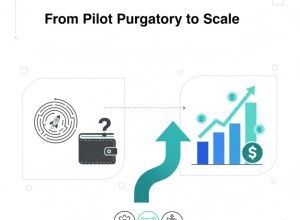[Article]: Zero Trust Security: Why Automation is Key to Implementation
Cyber threats are evolving unprecedentedly, making traditional security models increasingly ineffective. Organizations can no longer assume that users and devices inside their network perimeter are trustworthy. This is where Zero Trust security comes in–a security framework that requires continuous verification of every user, device, and application attempting to access corporate resources.
However, implementing Zero Trust manually can be complex and time-consuming. This is why automation plays a critical role in its successful adoption. Businesses can efficiently manage access controls, monitor security events, and respond to real-time threats by leveraging automation.
Understanding Zero Trust Security:
Zero Trust is built on the principle of “never trust, always verify.” Zero Trust enforces strict identity verification and least-privilege access policies instead of granting blanket access based on location or network boundaries. Every request for access must be authenticated and authorized, regardless of whether it originates from inside or outside the organization.
The key components of Zero Trust include:
- Identity verification: Ensuring that only authorized users can access sensitive data.
- Device security: Checking the health and compliance of devices before granting access.
- Least-privilege access: Restricting permissions to the minimum required level.
- Continuous monitoring: Analyzing user behavior and detecting anomalies in real time.
The Challenges of Manual Implementation:
While the benefits of Zero Trust are clear, manually enforcing these security measures presents several challenges:
- Time-consuming verification: Traditional identity verification processes can slow down workflows.
- Human error: Manual management of access controls increases the risk of misconfigurations.
- Delayed threat detection: Security teams may struggle to keep up with real-time threat analysis.
These limitations make it difficult for organizations to implement Zero Trust effectively. Automation addresses these challenges by streamlining security processes and reducing the burden on IT teams.
Why Automation is Key to Zero Trust Implementation:
1. Automated Identity Verification:
One of the most critical aspects of Zero Trust is ensuring that users are who they claim to be. Automated identity verification tools, such asID card scanner, help organizations authenticate employees, contractors, and visitors efficiently. By integrating this technology, businesses can instantly verify credentials, reducing the risk of unauthorized access while improving user experience.
2. AI-Powered Threat Detection:
Automation enables AI-driven analytics to detect unusual activity patterns and flag potential threats. Instead of relying solely on security teams to monitor access logs, machine learning algorithms can analyze vast amounts of data in real time, identifying anomalies that may indicate credential theft or insider threats.
3. Dynamic Access Control:
With automation, access controls can adapt dynamically based on risk levels. If an employee logs in from an unusual location or device, an automated system can enforce multi-factor authentication (MFA) or restrict access until further verification is completed.
4. Automated Incident Response:
When a security breach occurs, automated systems can contain the threat immediately by revoking access, isolating affected devices, and notifying IT teams. This rapid response minimizes potential damage and prevents attackers from moving laterally across the network.
Endnote:
Zero Trust security is no longer an option; it’s necessary in today’s digital realm. However, its effectiveness depends on automation to ensure seamless identity verification, real-time threat detection, and dynamic access control.
By leveraging AI-driven automation, organizations can enforce Zero Trust principles without compromising efficiency or user experience. Implementing automation not only strengthens cybersecurity but also future-proofs businesses against evolving threats.
Image Attribution:
https://pixabay.com/photos/cyber-security-internet-network-4610993/









































Interested? Submit your enquiry using the form below:
Only available for registered users. Sign In to your account or register here.